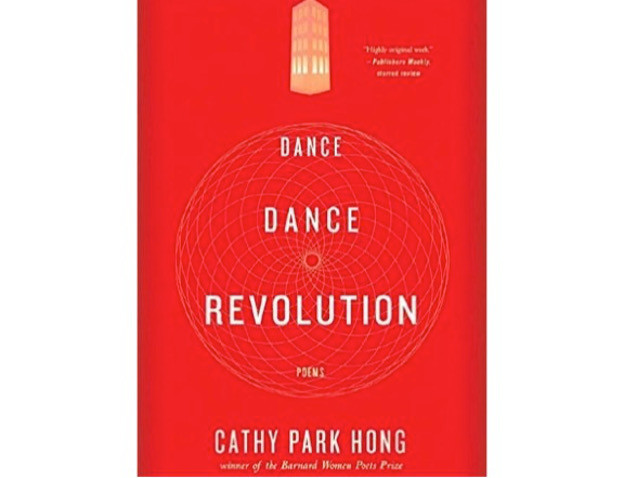Cathy Park Hong's 'Dance Dance Revolution'

Written in 2007, Cathy Park Hong’s Dance Dance Revolution is set in a hyperreal, dystopic 2016.
While the text does not self-identify as an epic, the genre tropes are present throughout. There is a quest, a journey, and an invented vernacular that meters many of the lines. We are introduced to the protagonist-heroine guide Chun Sujin, the “talky Virgil,” who prefers to be called the Guide and who will lead a visiting Historian through the Desert city, telling stories about her South Korean upbringing and her current life alongside other Desert city residents.The poetic narrative weaves history and future, real and fictional events, with tales of two uprisings, political violence, economic exploitation, migration, and the forced exile faced by Desert natives and dissidents who are displaced to New Town, a beyond set behind an always-advancing border.
In the Desert city, globalization’s expanse is consolidated into a single site of peak empire leisure and attendant economic disparity. Consisting of hotels that represent other cities, the Desert houses, among others, the Paris Hotel, the St. Petersburg Hotel and the Belgrade Inn. The city shimmers with spectacle: “ … a million lightbulbs en Desert wit cleanest latrines / en our strobe lit lobbies since desert non sin … each / hotel de McCosm o any city … Bangkok ova here, / Paree ova dere … ”
The Desert’s opulence is built upon an obscured history of revolution not recorded in the official annals. The Guide describes the post-insurrection cleanup in which, “Blood rust has been Windexed to amber shine, / insurrecta’s marauding soul wetted into papa-machetes, / looted radio back en turtle-doved municipal hands.” In one sense, the uprising’s presence is erased: sanitized with Windex, commodified into papier-mâché objects, and appropriated into power’s porcelain hands. In another sense, the Guide’s insistence on telling the story of the uprising refuses to hand history to the victors.
As the narrative unfolds, the Guide reveals to the Historian that the resistance is alive and well, a growing rumble ready to disrupt with acts small and big — from guides “misguiding travelers to stumble / into mines from last era’s war” to coordinated opposition arising from New Town, planned “sabotage” soon to be “ … rushing, rushing onward / salvi facti sunt humming will louden, / heighten wit durable actions … ” to challenge the Desert’s power.
Like a good subversive, the Guide leads when she needs to and misleads when she needs to. Is she a traitor who, like her collaborator father, turns in rebels to enemy officials? Is she a revolutionary voice like her mother, a famous Pansori singer of the community’s song? Will she reprise her role as the “voice o Kwangju, / uprising’s danseur principal” who “roused tousands” with her radio broadcasts? In the end, the Guide suggests an effective revolutionary may “sweep / unda storyline, sweep unda you,” suggesting that she has swept her own covert activities under the alternative storyline she has provided to the Historian. Dance Dance Revolution ends with a call to action. The Guide summons, “Might I brush out dragonfly wings / from mine wig. / If de world is our disco ball, / might I have dim dance” – a call reaching us at the end of our 2016 with an imperative to organize, subvert, dance, defy.
Epic Engagements